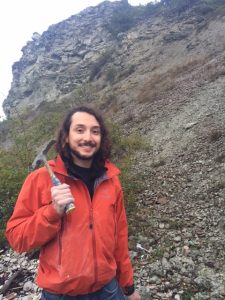
PhD student, Geobiology and isotope geochemistry, University of Copenhagen
Today, the air we breathe, the forests we see, the oceans we sail are simply a temporary moment in the Earth’s history. The past, our planet’s past, has been a continuous concatenation of changes; the constant pursuit of equilibrium amongst its components: rocks, life, oceans, atmosphere. Everything interacts with each other, endlessly, and leaves traces in the form of something we can call ‘the code of nature’. We, geologists, try to decipher that code, either by looking at rocks, performing chemical analyses or studying fossils, always with the same goal: understanding our planet. During my PhD I will try to decipher part of that code, the one called isotopic geochemistry, specifically the isotopic geochemistry of the oceans during three important mid Paleozoic events (between ca. 470 and 370 Ma), each of which potentially reflecting a global decrease in the oxygenation levels of the seawater (expansion of anoxic waters) as a result of an increase in primary productivity (blooming of oceans due to incorporation of nutrients) that ultimately can be linked to the changes brought by the evolution of land plants. By primarily studying stable Uranium isotopes in carbonates, I will be able to depict part of our Earth’s past oceans and life. Sad thing is, I will never be able to see -with my own eyes- what those environments really looked like.
